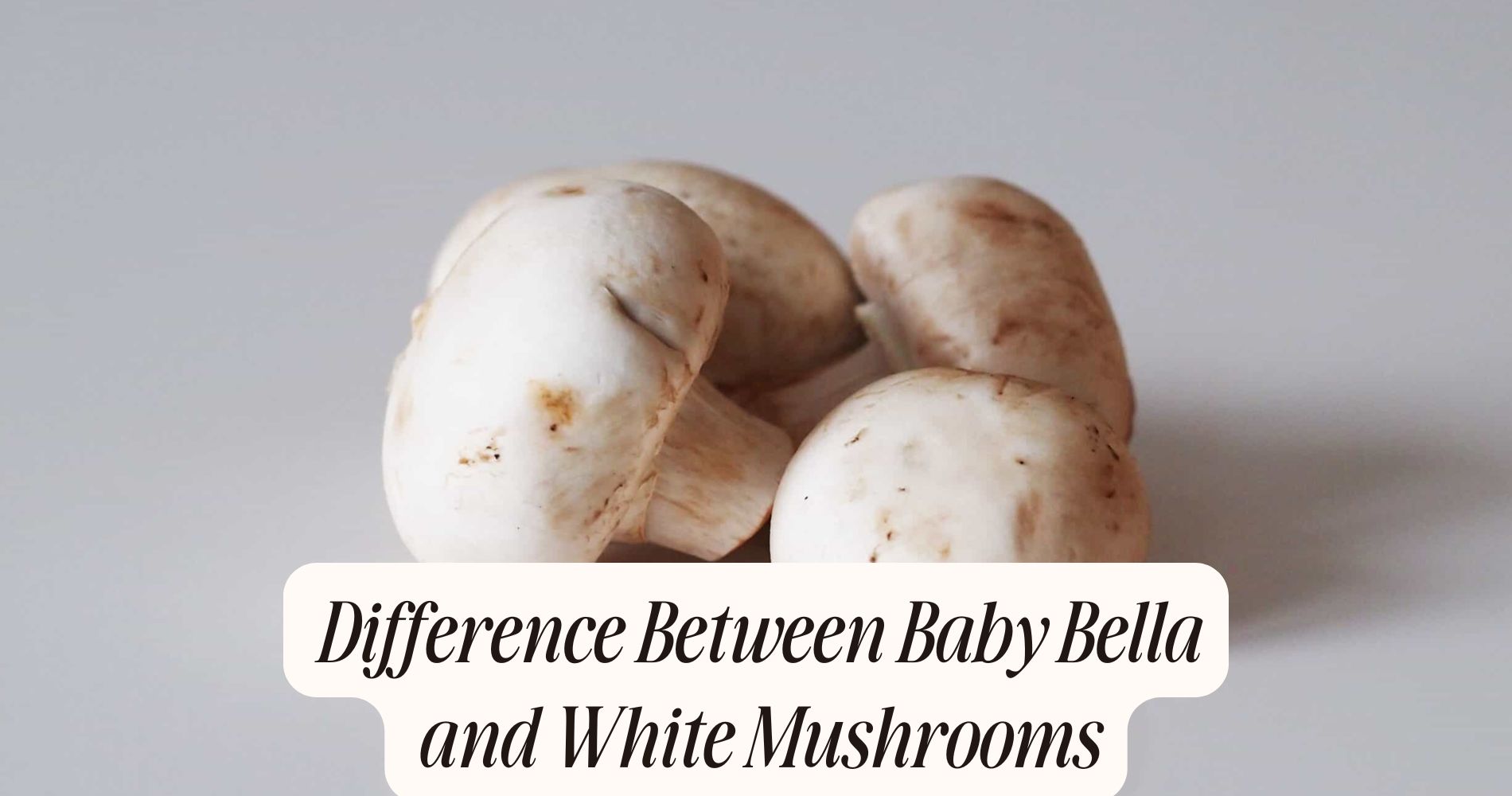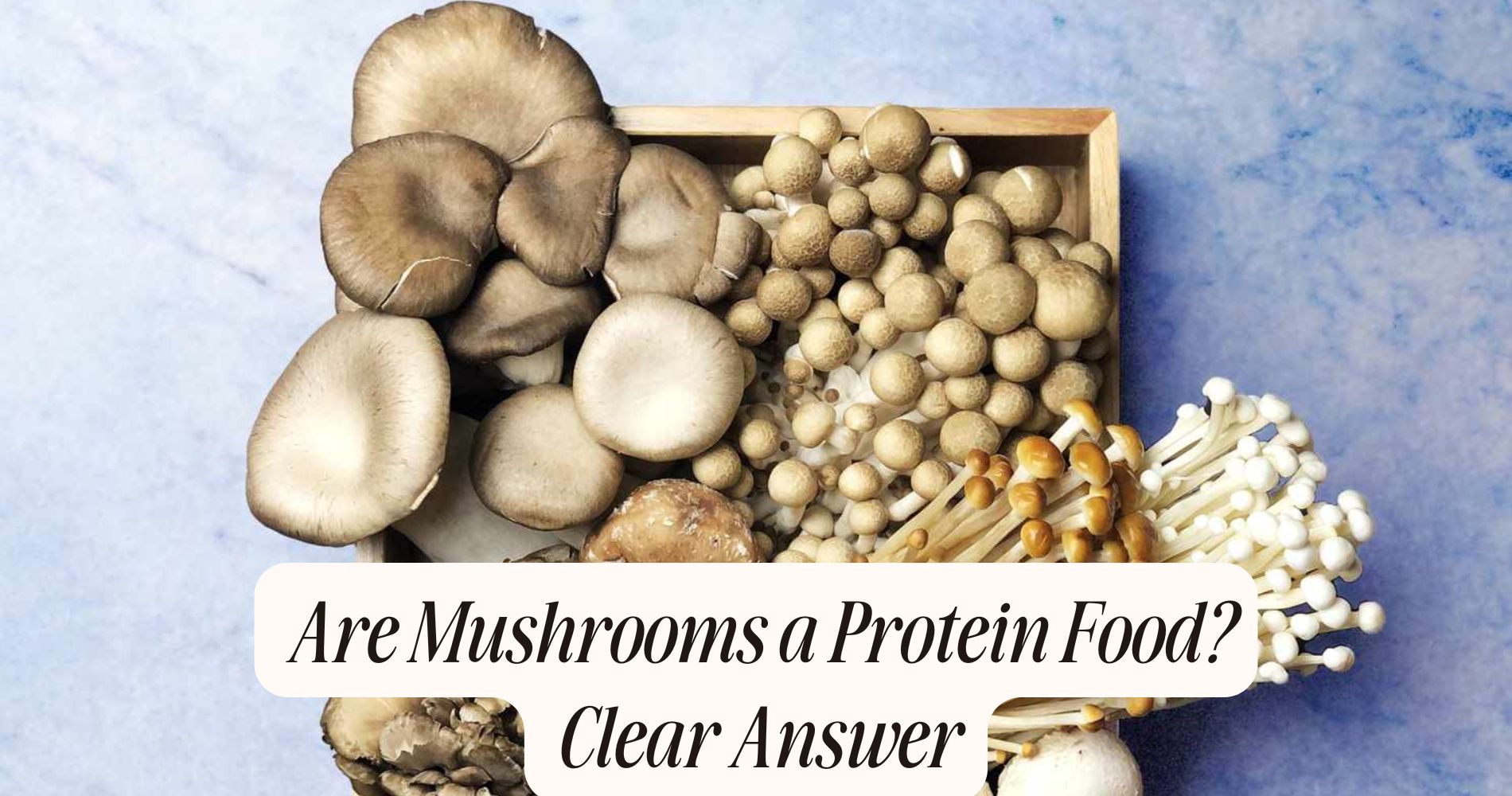
Difference Between Baby Bella and White Mushrooms
Understanding the difference between baby bella and white mushrooms starts with recognizing that both come from the same species—Agaricus bisporus—but are harvested at different stages of growth. Baby bellas, also known as cremini, are more mature, giving them a darker brown cap, firmer texture, and deeper umami flavor thanks to higher concentrations of polyphenols and amino acids. White mushrooms, picked earlier, have a lighter color, softer bite, and milder taste. Knowing how they differ in texture, flavor, and nutrients can help you choose the right mushroom for every dish.
Appearance and Color
Although both Baby Bella and White mushrooms belong to the Agaricus bisporus species, their appearance and color differ noticeably.
When you examine Baby Bella mushrooms, you'll find they exhibit a light to dark brown cap, whereas White mushrooms display a smooth, pure white cap.
The cap shape in Baby Bella mushrooms tends to be slightly more convex and robust, while White mushrooms often present a more uniformly rounded and smooth cap surface.

Stem thickness also varies; Baby Bella mushrooms generally have a denser, slightly thicker stem compared to the more delicate, slender stem of White mushrooms.
Visually, Baby Bellas also show deeper pigmentation and more visible gill structures as they mature, while White mushrooms maintain a lighter, more uniform coloration throughout their development.
Flavor Profile
When comparing the flavor profiles of Baby Bella and White mushrooms, you’ll notice distinct differences rooted in their developmental stage and biochemical composition. Baby Bellas (Agaricus bisporus, brown variety) exhibit a robust umami character with earthy, nutty undertones due to higher concentrations of amino acids and polyphenols.
In contrast, White mushrooms (Agaricus bisporus, white variety) feature a milder, more delicate flavor, attributed to lower levels of these flavor-contributing compounds. These differences influence your cooking techniques—Baby Bellas excel in sautés, roasts, and grilling, where their intensified profile enhances savory dishes.
White mushrooms complement raw applications or lighter recipes. Both contribute nutritional benefits, offering B vitamins, selenium, and antioxidants, but Baby Bellas’ denser flavor often translates to richer nutrient content per serving.

Texture Differences
Owing to their distinct cellular structures and moisture content, Baby Bella and White mushrooms present notable textural contrasts.
When you examine the mushroom texture microscopically, Baby Bella mushrooms (Agaricus bisporus, brown variety) contain denser hyphal networks and firmer cell walls, resulting in a meatier, more resilient bite.
In contrast, White mushrooms (Agaricus bisporus, white variety) display a higher water content and thinner cell structure, yielding a softer, spongier texture.
During culinary applications, you’ll notice that Baby Bella mushrooms maintain their integrity and structure under heat, making their cooking texture ideal for grilling or sautéing.
White mushrooms, however, tend to release more moisture and soften rapidly during cooking, which can be advantageous for dishes requiring a tender, delicate mouthfeel without pronounced chewiness.

Nutritional Comparison
Curiously, how do Baby Bella and White mushrooms differ in their nutritional profiles despite both belonging to the Agaricus bisporus species? While both arise from similar mushroom cultivation techniques, their maturation stages influence nutrient density.
You’ll find that Baby Bella mushrooms, also known as cremini, tend to have a higher concentration of potassium, phosphorus, and B vitamins compared to White mushrooms. This darker pigmentation correlates with enhanced antioxidant properties, contributing additional nutritional benefits.
White mushrooms, harvested at an earlier stage, offer fewer micronutrients but maintain low calorie and carbohydrate counts, making them ideal for calorie-restricted diets.
Both varieties provide valuable dietary fiber, selenium, and ergothioneine, but Baby Bellas often edge out Whites in overall mineral content due to their more developed cellular structure.
Culinary Uses
Although both Baby Bella and White mushrooms derive from Agaricus bisporus, their distinct maturation stages yield notable differences in texture and flavor, directly impacting culinary applications.
You'll notice Baby Bella mushrooms—an intermediate form between White and mature Portobello—exhibit a firmer texture and pronounced umami notes. This makes them ideal for robust cooking techniques such as roasting, grilling, and sautéing, where their flavor intensifies.
Pairing suggestions include red meats, hearty grains, and aged cheeses, as their deeper taste profile complements these ingredients.
Conversely, White mushrooms possess a tender texture and milder, subtly earthy flavor. They're best suited for raw applications like salads or gentler cooking methods such as steaming and light sautéing.
Their delicate notes pair well with poultry, fresh herbs, and light cream sauces, enhancing subtle culinary compositions.
Shelf Life and Storage
Since Baby Bella and White mushrooms both originate from Agaricus bisporus, their post-harvest physiology exhibits similarities, yet their distinct maturity levels influence shelf life and ideal storage conditions.
Baby Bellas, being more mature, possess firmer cell walls and slightly reduced moisture content compared to the juvenile White variety. This structural difference allows Baby Bellas to resist microbial spoilage and enzymatic browning marginally better, granting you a shelf life extension of up to one week under best conditions.

For both types, you should refrigerate unwashed mushrooms in a breathable container, such as a paper bag, to minimize condensation and suppress bacterial proliferation. Avoid airtight storage, as anaerobic conditions accelerate decomposition.
Employing these storage tips, you’ll maintain texture, minimize nutrient loss, and maximize both Baby Bella and White mushrooms’ shelf life.
Cost and Availability
After considering ideal storage practices for Agaricus bisporus varieties, examining their cost and availability reveals further distinctions.
When you conduct a price comparison, you'll notice that white mushrooms (the immature form) generally cost less per pound than baby bellas (the intermediate, brown variety). This price differential arises from higher demand and broader cultivation of white mushrooms, which are produced on a larger commercial scale.
Baby bellas, while still widely available, occupy a niche between white mushrooms and the mature portobello stage, leading to moderately higher market prices.
Regarding seasonal availability, both varieties are cultivated year-round in controlled environments, so you won't encounter significant fluctuations. However, local supply, organic certification, and packaging formats can further influence both cost and accessibility at your preferred retailer.
Cooking Tips for Each Variety
When preparing Agaricus bisporus varieties, each responds uniquely to culinary techniques due to differences in texture, moisture content, and flavor development.
You'll notice that baby bella mushrooms, harvested at a more mature phase of mushroom cultivation techniques, have a denser cell structure with reduced water content compared to white mushrooms. This means you can sauté or roast baby bellas at higher temperatures, allowing their umami-rich, earthy flavor to intensify without becoming soggy.
Conversely, white mushrooms, picked earlier during mushroom harvesting, retain more moisture and have a milder flavor profile. For these, quick cooking methods like stir-frying or adding to soups preserve their delicate structure and subtle taste.
Always clean both varieties with minimal water to prevent excess absorption and maintain ideal texture during cooking.
How to Choose the Right Mushroom for Your Recipe
Although both baby bella and white mushrooms belong to the species Agaricus bisporus, their stage of maturity and corresponding biochemical composition considerably influence their suitability for various recipes.
When selecting mushrooms, consider texture and flavor profile: white mushrooms, harvested at an immature phase, offer a mild taste and tender cap, making them ideal for raw applications or quick-cook methods such as sautéing.
In contrast, baby bellas—also known as cremini—are more mature, displaying firmer texture and robust umami due to increased polyphenol and amino acid content. For recipes involving roasting, grilling, or braising, choose baby bellas for their ability to retain structure and impart deeper flavor.
For pairing suggestions, use baby bellas with red meats or hearty grains, and white mushrooms with poultry or delicate vegetables.
Try the Benefits in Every Bite
If you're intrigued by the unique qualities of baby bella and white mushrooms, you'll love the functional fusion in SUPER MUSHROOM GUMMIES by Well Gummies. Each delicious wild-berry flavored chew delivers the power of 10 functional mushrooms—including varieties known for their cognitive, immune, and energy-boosting properties. It's the easiest, tastiest way to enjoy the benefits of mushrooms—no prep, no cooking, just clean focus and calm energy. Shine through your day without jitters or crashes!
Frequently Asked Questions
Are Baby Bella and White Mushrooms Safe to Eat Raw?
You can safely eat both baby bella (Agaricus bisporus, brown variant) and white mushrooms (Agaricus bisporus, white variant) raw. However, nutritional differences and culinary uses may influence your choice, as each offers unique flavor compounds and micronutrient profiles.
Can People With Mushroom Allergies Eat Both Types?
If you have a mushroom allergy, you shouldn’t consume either Agaricus bisporus varieties—white mushrooms or baby bellas—due to cross reactivity. Both taxa share similar allergenic proteins, which can trigger immunological hypersensitivity reactions in susceptible individuals.
Do Baby Bella and White Mushrooms Grow in the Wild?
You’ll find Agaricus bisporus species, including baby bella and white mushrooms, rarely in wild mushroom habitats. Foraging safety is essential; wild specimens can resemble toxic fungi, so don’t collect them unless you possess expert mycological identification skills.
Are Either Mushroom Varieties Considered Medicinal?
You won't find Baby Bella (Agaricus bisporus, brown variety) or White mushrooms classified as medicinal fungi. However, both exhibit health benefits due to bioactive compounds like polysaccharides and antioxidants, though their medicinal properties are less pronounced than species like Reishi.
What Are the Environmental Impacts of Farming These Mushrooms?
When you farm Agaricus bisporus, sustainable farming practices like composting and closed-loop irrigation help minimize its ecological footprint. You'll find that optimizing substrate use and reducing energy consumption are critical for maintaining environmental balance in mycological cultivation.
Conclusion
When selecting between Agaricus bisporus varieties, you'll notice that baby bella (cremini) mushrooms exhibit a firmer texture, deeper umami flavor, and a tan-brown cap compared to the milder, white-capped button mushrooms. Nutritionally, both offer similar macronutrient profiles, though creminis provide marginally higher micronutrients. Your culinary choice depends on desired flavor intensity and texture. By understanding these morphological and phytochemical distinctions, you can optimize your recipes with the precise mushroom variety for superior gastronomic and nutritional outcomes.




